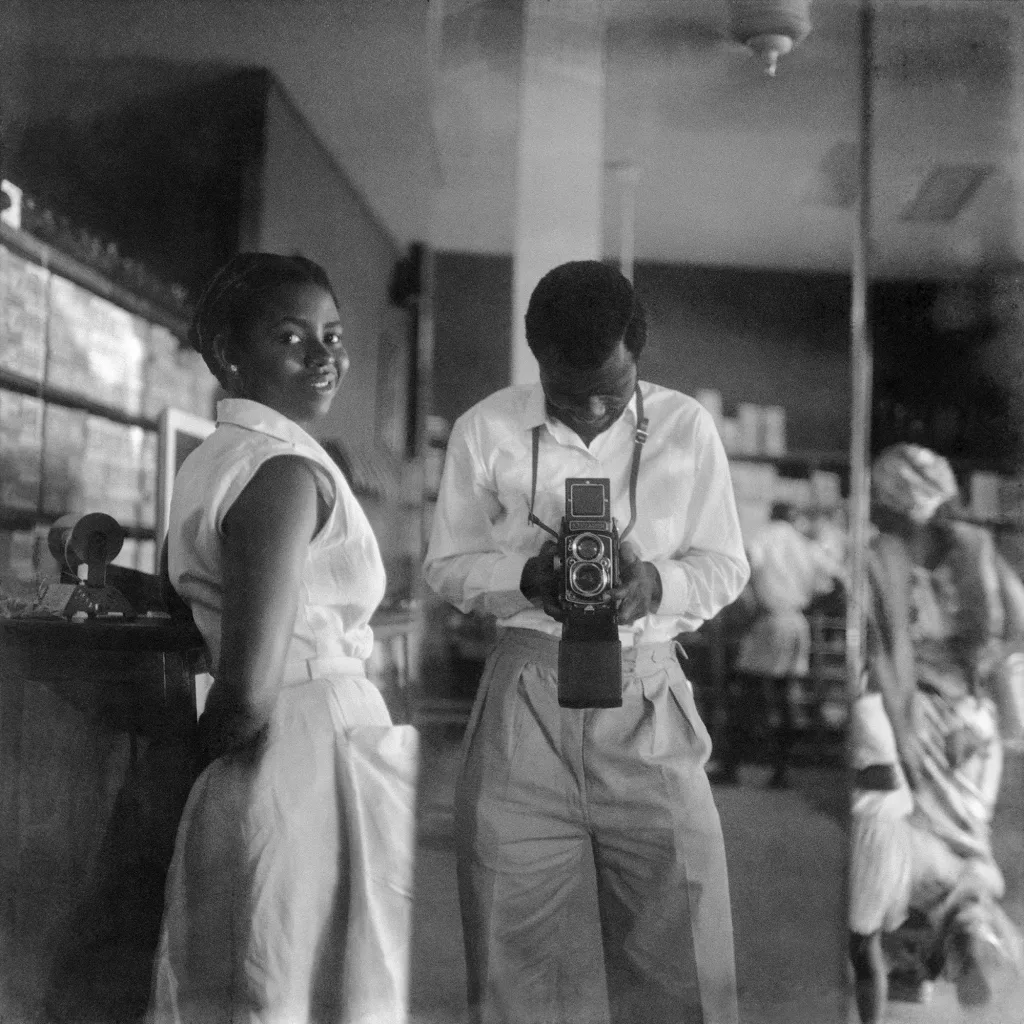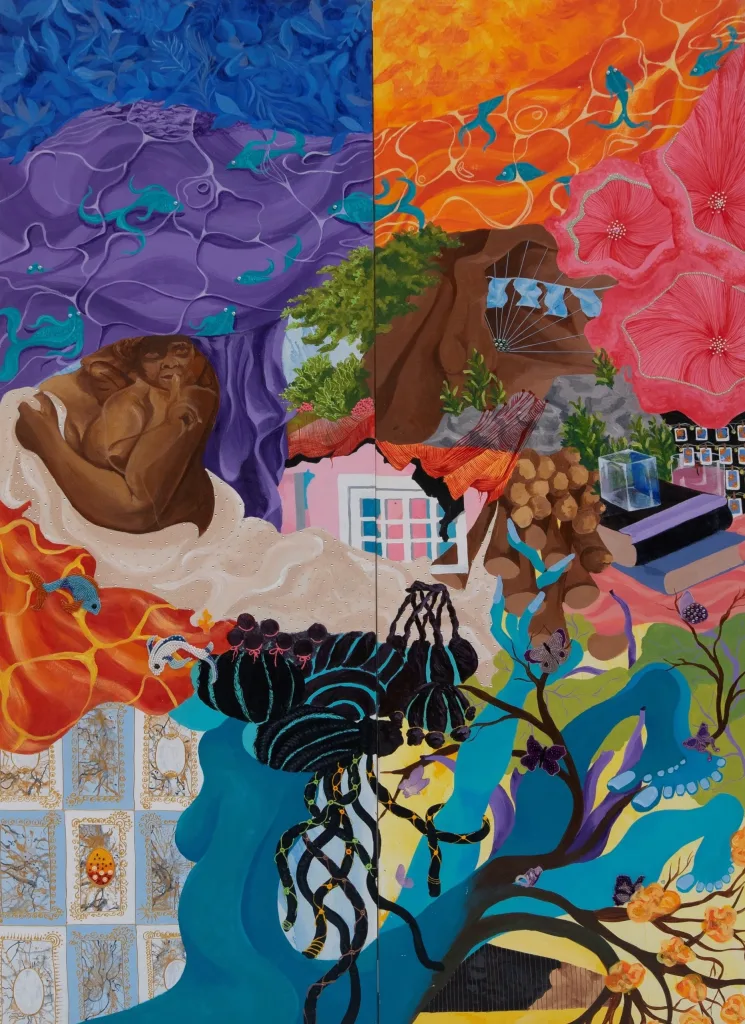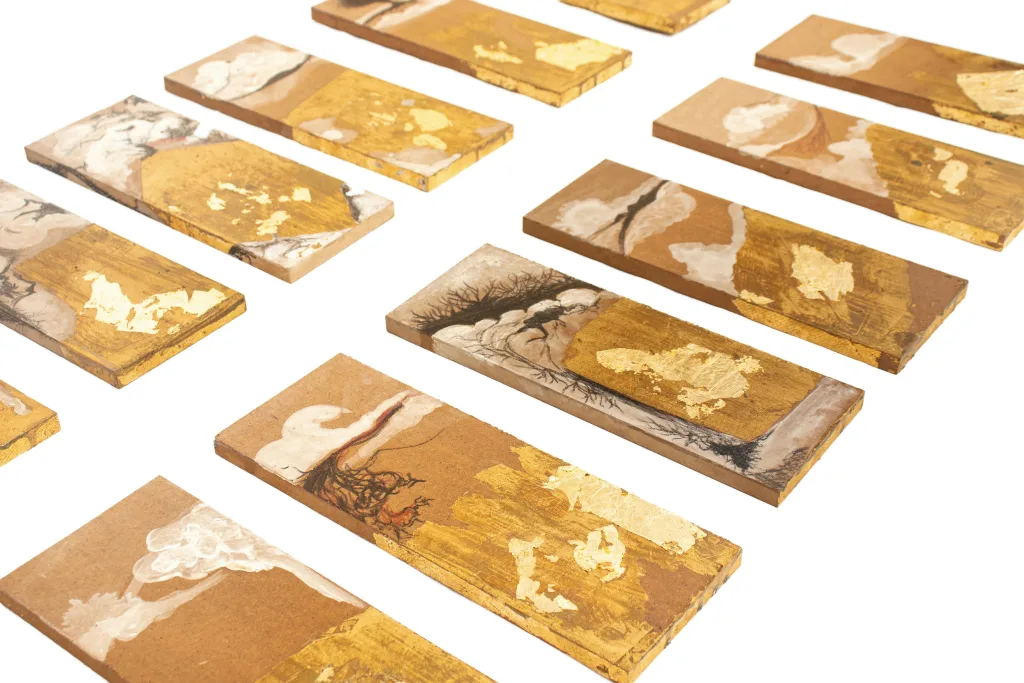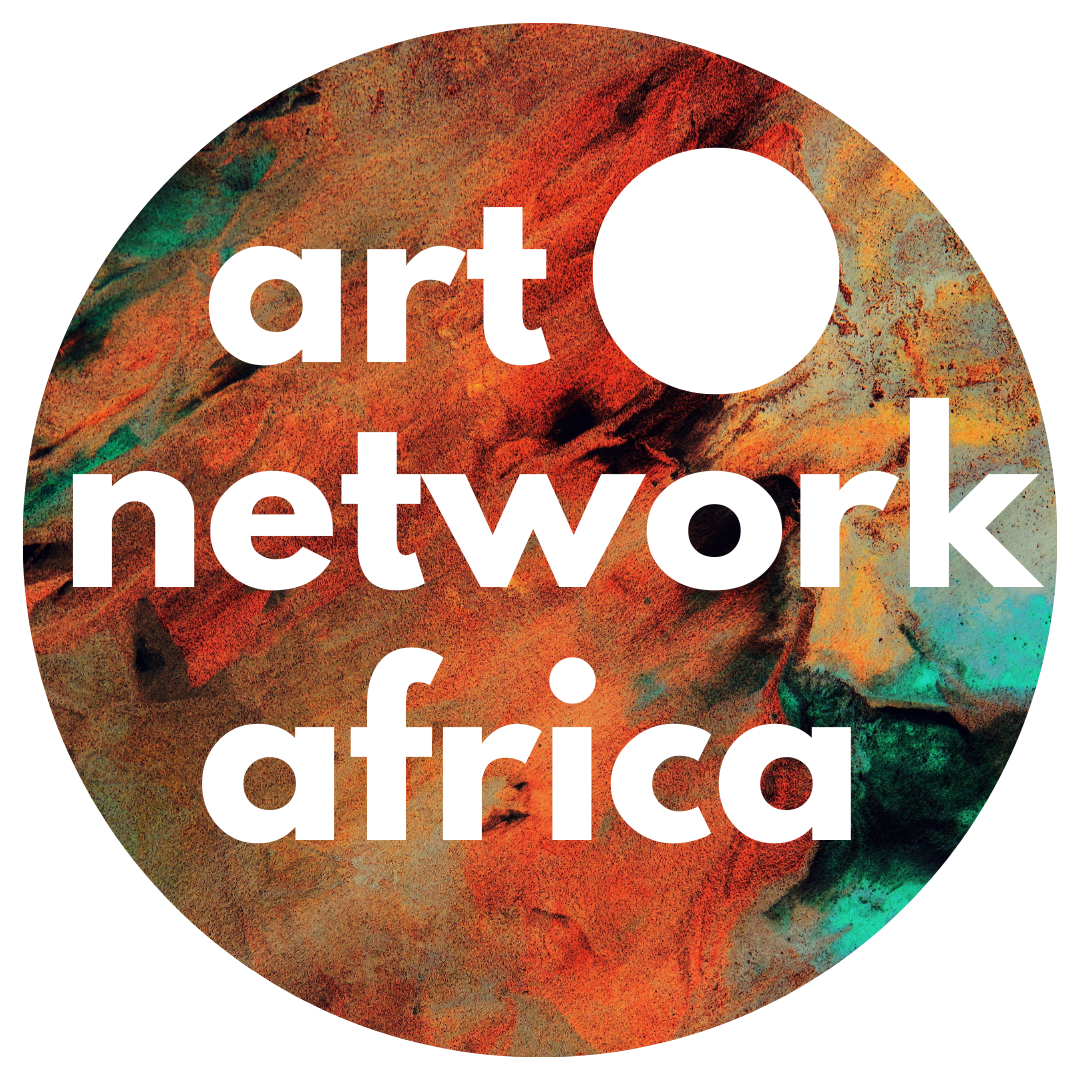APALAZZOGALLERY presents Fragments of a World After Its Own Image: a group show featuring twelve artists,
most of whom are members of the blaxTARLINES KUMASI coalition–the transgenerational, transcultural and sharing community founded in 2015 at the Department of Painting and Sculpture, Kwame Nkrumah University of Science and Technology (KNUST) in Kumasi, Ghana. On from 29 March to 17 May 2025, the exhibition is curated by Kwasi Ohene-Ayeh, with curatorial assistance by Maria Olivia Nakato and Zitoni Kayonga Tristan Tani, and features Felicia Abban (née Ansah), Dennis Ankamah Addo (niiankama), James Barnor, Afrane Akwasi Bediako, Ernestina Mansa Doku, Isshaq Ismail, Samuel Baah Kortey, Tegene Kunbi, Maame Adjoa Ohemeng, Jeffrey Otoo, Edward Prah and Naomi Boahemaa Sakyi Jr.

Courtesy Galerie Clémentine de la Féronnière, © James Barnor
Over the past two decades, the Ghanaian contemporary art scene has grown and expanded signifcantly, gaining
traction and recognition in international art circles. This momentum fnds its epicentre in the city of Kumasi, where it gravitates around blaxTARLINES KUMASI: a community of artists, curators, thinkers, faculty, and students dedicated to developing collaborative, collective, and experimental practices that raise critical questions about art today. The impetus for this open-source collective dates back to the early 1990s, peaking in 2003 when artist-intellectual kąrî’kạchä seid’ōu implemented his Emancipatory Art Teaching Project at the KNUST Department of Painting and Sculpture. seid’ōu’s project could be said to have sought to reveal and transcend the ‘offcial’, ‘hidden’, and ‘missing’ curricular of the KNUST Painting programme–which, since the 1920s, had been underpinned by the Euro-Western canon of Beaux Arts and atelier norms and skillsets–while at the same time attempting to transform art from the status of commodity to gift.

Courtesy the Artist and APALAZZOGALLERY
Photo by Daniel Mensah Boafo
This curatorial-pedagogical project is what laid out the terms for new egalitarian conditions out of which the exponents of blaxTARLINES and their allies conceive of art as a site of multiplicity while developing the intellectual and material substructure of international contemporary art in Africa and abroad by co-developing curricula, publicly accessible art spaces, cultural platforms, residencies, studios, and much more. The title of the exhibition at APALAZZOGALLERY alludes to passages in Karl Marx and Friedrich Engels’s Communist Manifesto (1848) which critique the globalised market system as a construct of bourgeois hegemony, designed to “create
a world after its own image.” Contesting this false universalism, and affrming the blaxTARLINES spirit of intergenerational conversation, Fragments of a World After Its Own Image also politicises aesthetics by way of a materialist analysis of the ‘image’, engaging it as an affect of the forces of production, distribution, consumption, and so on. This summarises the spirit by which the coalition restitutes universalism–the space for none in particular–from its monogenetic (imperialistcapitalist-colonialist) schema to radical inclusivity that embraces pre-emptive equality.

Courtesy the Artist and APALAZZOGALLERY, Photo by Daniel Mensah Boafo
As the curator explains: “The artists do not take their chosen media and vantage points for granted, and are invested in unveiling beyond what their respective forms–photography, painting, sculpture, mixed media, installation, digital drawing interactive media (gaming) technologies and other experimental approaches–have to offer. Fragments of a World After Its Own Image comes to terms with the egalitarian thrust of multiplicity and politicises aesthetics by analysing the ‘image’ as a co-present affect immanent to the forces of production, distribution and consumption. The show also affrms blaxTARLINES’s model of intergenerational conversations with a tactical indifference to time. Such principles serve as the conditions in which the participating artists’ and curatorial visions collide, giving rise to situations that confront the quotidian, the fantastical, the naturalistic, the artifcial, the anthropocentric, the virtual, the uncanny and beyond. By so doing, not only are we questioning what is already known about art today, we are also probing the relationships between artwork, exhibition space, the spectator, and the artists’ and curator’s role in all of this. Besides these individual perspectives, there is collective contribution to a position which articulates art as a universality, à la blaxTARLINES, as an inherently inclusive entity without prejudice to any particular skill, process, genre, medium, content, material or trend, and so on.”
Special thanks to Galerie Clémentine de la Féronnière.


